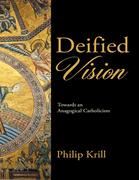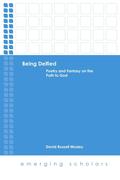26 Results for : deified
-

The Illustrated Life of Robert E. Lee: History for Kids , Hörbuch, Digital, ungekürzt, 28min
It is well that war is so terrible, or we would grow too fond of it. (Robert E. Lee)In Charles River Editors' History for Kids series, your children can learn about history's most important people and events in an easy, entertaining, and educational way. The concise but comprehensive audiobook will keep your kid's attention all the way to the end.With the exception of George Washington, perhaps the most famous general in American history is Robert E. Lee (January 19, 1807-October 12, 1870), despite the fact he led the Confederate Army of Northern Virginia against the Union in the Civil War. As the son of US Revolutionary War hero Henry "Light Horse Harry" Lee III and a relative of Martha Custis Washington, Lee was imbued with a strong sense of honor and duty from the beginning. As a top graduate of West Point, Lee had distinguished himself so well before the Civil War that President Lincoln asked him to command the entire Union Army. Lee famously declined, serving his home state of Virginia instead after it seceded.Lee is remembered today for constantly defeating the Union's Army of the Potomac in the Eastern Theater from 1862-1865, considerably frustrating Lincoln and his generals. His leadership of his army led to him being deified after the war by some of his former subordinates, especially Virginians, and he came to personify the Lost Cause's ideal Southern soldier. His reputation was secured in the decades after the war as a general who brilliantly led his men to amazing victories against all odds.Despite his successes and his legacy, Lee wasn't perfect. And of all the battles Lee fought in, he was most criticized for Gettysburg, particularly his order of Pickett's Charge on the third and final day of the war. Despite the fact his principle subordinate and corps leader, General James Longstreet, advised against the charge, Lee went ahead with it, ending the army’s defeat at Gettysburg with a violent climax that left half of ungekürzt. Language: English. Narrator: Dan Gallagher. Audio sample: https://samples.audible.de/bk/acx0/100565/bk_acx0_100565_sample.mp3. Digital audiobook in aax.- Shop: Audible
- Price: 9.95 EUR excl. shipping
-

Deified Vision: Towards an Anagogical Catholicism
Deified Vision: Towards an Anagogical Catholicism: ab 8.99 €- Shop: ebook.de
- Price: 8.99 EUR excl. shipping
-

Deified Person
Deified Person - A Study of Deification in Relation to Person and Christian Becoming: ab 77.99 €- Shop: ebook.de
- Price: 77.99 EUR excl. shipping
-

Being Deified
Being Deified - Poetry and Fantasy on the Path to God: ab 75.49 €- Shop: ebook.de
- Price: 75.49 EUR excl. shipping
-
-
Voodoo Fire & Other Works by Derek Strahan
'VOODOO FIRE & OTHER WORKS BY DEREK STRAHAN RDS 006 Total duration: 73.42 Program notes by composer for 'VOODOO FIRE', 'CHINA SPRING'. SOLOCELLO SUITE #1, 'ATLANTIS' and 'CLARINET CONCERTO #1, 3rd Movement. See end for composer's biography 'VOODOO FIRE' (1996) for Clarinet, Percussion and Keyboard. Performance by Alan Vivian, clarinet, Michael Askill, percussion, Susanne Powell, keyboards. LIVE RECORDING OF PREMIER PERFORMANCE AT CANBERRA SCHOOL OF MUSIC 21/04/1996. Duration 16.18 The work was commissioned by the Canberra School of Music for performance by clarinetist Alan Vivian and colleagues, as the result of discussions between Alan and myself over a number of years, following from Alan's splendid work recording my Clarinet Quintet No. 1 in D ('The Princess') in 1981. 15 years passed before the opportunity arose for me to write a piece especially for Alan. When he suggested I write a Trio for clarinet, percussion and keyboards, this gave me the opportunity to advance a particular interest of mine - the fusion of Western melodic counterpoint with African rhythmic counterpoint. In an arc stretching from Brazil to the Caribbean, the animist religious beliefs of Africa remain alive in South and Central America and in the deep south of the USA. The Haitian version of this religion is the best known probably because it inspired the only successful slave revolt in the world, and also because of it's supposed link with black magic. However, as in most religions, there are two clear paths which can be taken, that of the common good, and that of manipulative individual will. Central to Voodoo practice is the belief that, through ceremony and ritual the gods will possess participants and speak through them. Music and dance induce a trance state so that possession will occur. Specific dances and rites invoke specific gods. African music is distinguished by it's use of polyrhythms in drumming. A complex 'engine' of interacting rhythms produces a basis for unison chant. When Western music absorbed African influence to produce 'jazz' the following process seems to have occurred. 1) The polyrhythmic component was rejected, because it was alien to the Western harmonic system. In this, 'harmony' is achieved by vertical alignment of tones in a uni-rhythmic music where the coincidence of tones produces 'chords'. 'Jazz' as it has evolved requires performers to follow a 'chord sequence'. 2) One of the superficial effects of polyrhythm was retained - the displaced accent. Coming before the beat, this was called syncopation. In African drumming much of what sounds like syncopation is a side-effect of the concurrence of different rhythms. I have attempted in this piece to apply African rhythmic counterpoint to Western melodic counterpoint. The resulting fusion is not 'program music', nor is it, of course, true music of the Voodoo. However, in order to compose it, I did study music for which I have the greatest respect, accessed through commercially available recordings of authentic Voodoo ceremonies that took place in Haiti. As these recordings were made with the specific permission of Voodoo hougans (priests), it is right that I acknowledge the source of the musical techniques I have attempted to apply (see below). Shango is the Voodoo god of thunder and lightning, consequently also of fire. In writing music dedicated to Shango, I, a European Australian, am expressing my appreciation of the Voodoo attitude to a deity embodying this element. Shango is still worshipped as a very powerful spirit not only in Haiti, and in Brazil (as Xango) but also among the Yoruba of Nigeria, from whom Voodoo (or 'Vodun') is thought to originate. The mythology surrounding Shango is complex and colorful and can be quickly accessed in detail by googling his name on the internet. Derived from an historical figure, posthumously deified, Shango is the son of Aganju, a ferryman and god of fire. He once threw himself into fire to prove his lineage. He also has aspects of a thunder god, and, by analogy, of many Western fire gods, since, through the fire of lightning, Shango reveals "truth that hurts" by illuminating what was hidden. In Western culture gods of fire were also illuminators, who offered humans the fire of Enlightenment and Knowledge. According to our various myths, the chief gods guarded Knowledge and kept it hidden from humans. It fell to the rebellious fire god to share it with us, and he was always punished for his disobedience - demoted to being a demi-god (half-human), or demonized. Some of the names of the fire god in Western culture are: Prometheus, Loke (Loge of Wagner's "Ring") and Lucifer, the latter known also as the Light-Bringer and known also as the Fallen Angel, who was expelled from Paradise. By contrast, neither the fire god, nor any Voodoo gods are thought of as being either good or evil. Voodoo gods may at times behave with malice, since 'they embrace all aspects inherent in their physical and spiritual existence'(*). It is up to humans to induce the gods to act on their behalf, and this is done through ritual which embodies dance. Significantly, Shango is also god of the drums and dance. His power over the elements equates with the caprice and creative experience of human sexuality. Generic Voodoo terms for their gods are the 'lao', gods of earth and the underworld, and the "Orishas' gods of sky and heaven, among whom Shango is prominent. But all Voodoo gods are offspring of the Creator-God Mawu who is 'understood in his entirety' (*). The serpent figures strongly in the Voodoo faith. In it's many spellings "Voodoo" means "spirit and also 'the snake under whose auspices gather all who share the faith". Thus it would seem that the Voodoo attitude to the Creator-God is somewhat similar to the philosophy which underlies the heretical Gnostic version of Christianity. Gnostics view the Wise Serpent of Eden as a benefactor, an intermediary who intercedes to connect humans with the true God, by revealing Hidden Knowledge (Gnosis). No wonder the Gnostics were persecuted as heretics!. Voodoo, as a religion, was banned during the era of slavery, but survived by syncretism within the slave owners' faith, especially within Catholicism. For example, the gate to the 'Laos' is protected by a barrier whose guardian is 'Papa Legba' and who is also indicative of Saint Peter, since Voodoo 'effortlessly incorporates aspects of other religions'. Voodoo, Vodoun, Vudu or Vudun dates from the beginning of human civilization, and is estimated to be over 10,000 years old. On Thursday, April 10, 2003, Voodoo was officially sanctioned as a religion by the government of Haiti. Acknowledgements: 1) Sound recordings collected in Haiti and the island of La Tortue by Maurice Bitter with the agreement of the Hougans (priests) during actual Voodoo ceremonies. As released on LP, 'Voodoo Ceremony in Haiti', Olympic records. 2) Book: 'Voodoo, Africa's Secret Power' by Gert Chesi, published by Perlinger Verlag, 1979. (In 1964 Gert Chesi spent 8 months in Lambarene as the guest of distinguished author and Christian missionary Albert Schweitzer. It was during that time Chesi developed a deep interest in African tribes and their traditions). (*) Indicates quotations from this book. "Voodoo Fire" is written in three sections, played continuously, which correspond to a ritual performance, beginning with Offerings to the god, a Dance leading to Possession by the god and culminating in a prayer to Shango, the melody of which is freely adapted from a genuine Voodoo chant sung by the hougan with operatic fervour against energetic inspirational drumming. Within the work's musical structure there is some mirror imagery, where a passage is later repeated but with it's metre and notation played in reverse, leading to a reprise of the opening passage. The technicalities of this and other cyclic structural elements are described in detail in the educational Music Kit available for this work. 1. Invocation of the Fir- Shop: odax
- Price: 18.65 EUR excl. shipping

